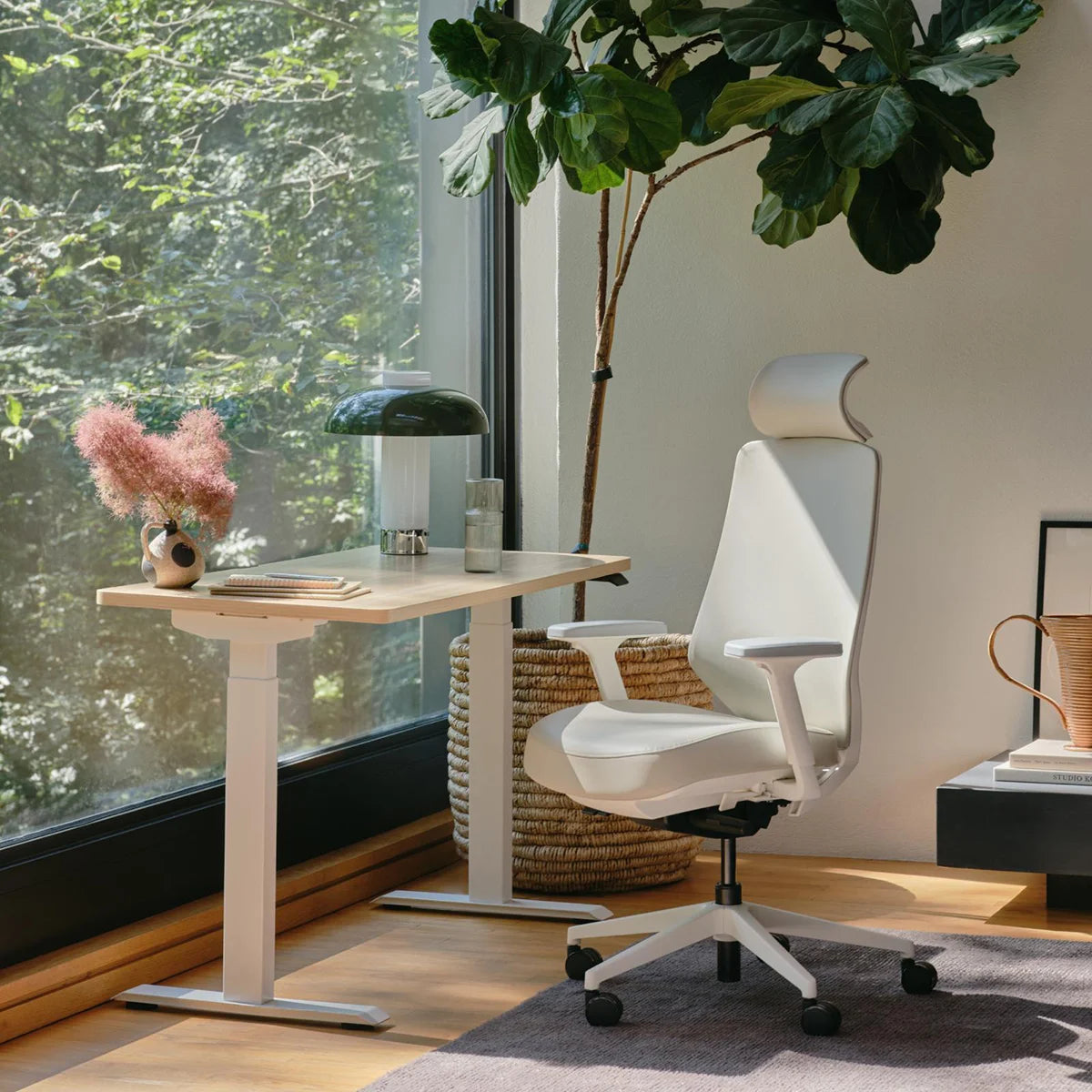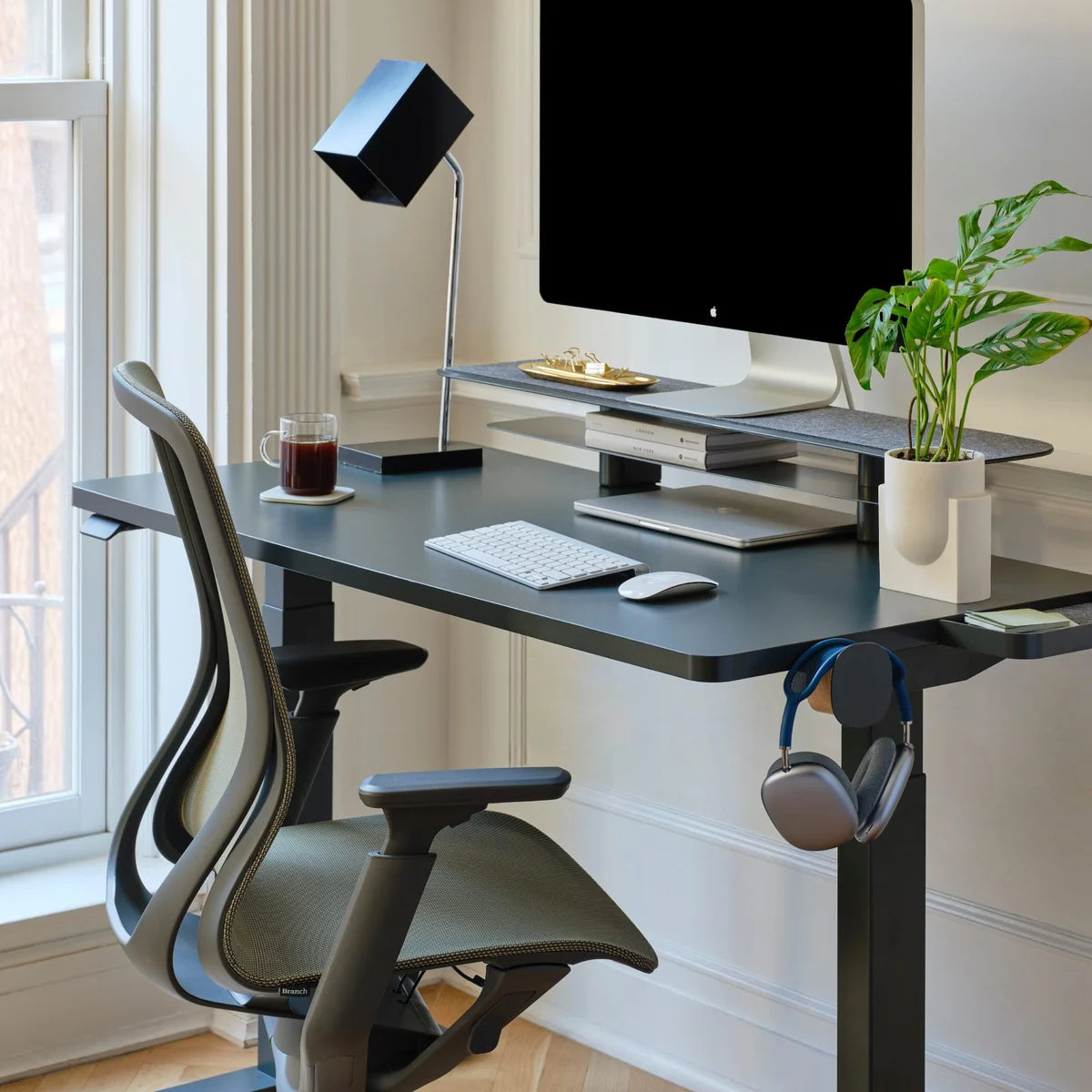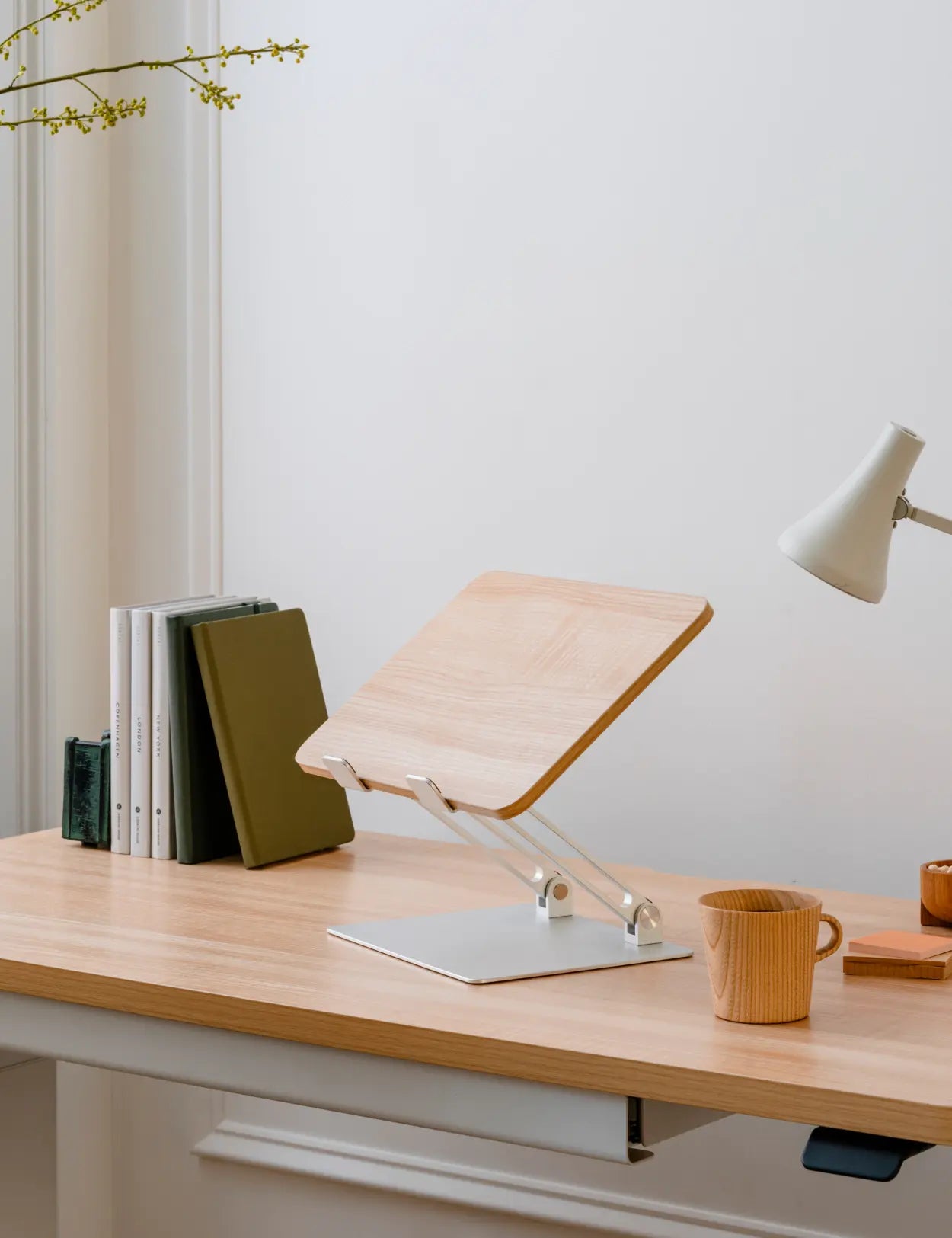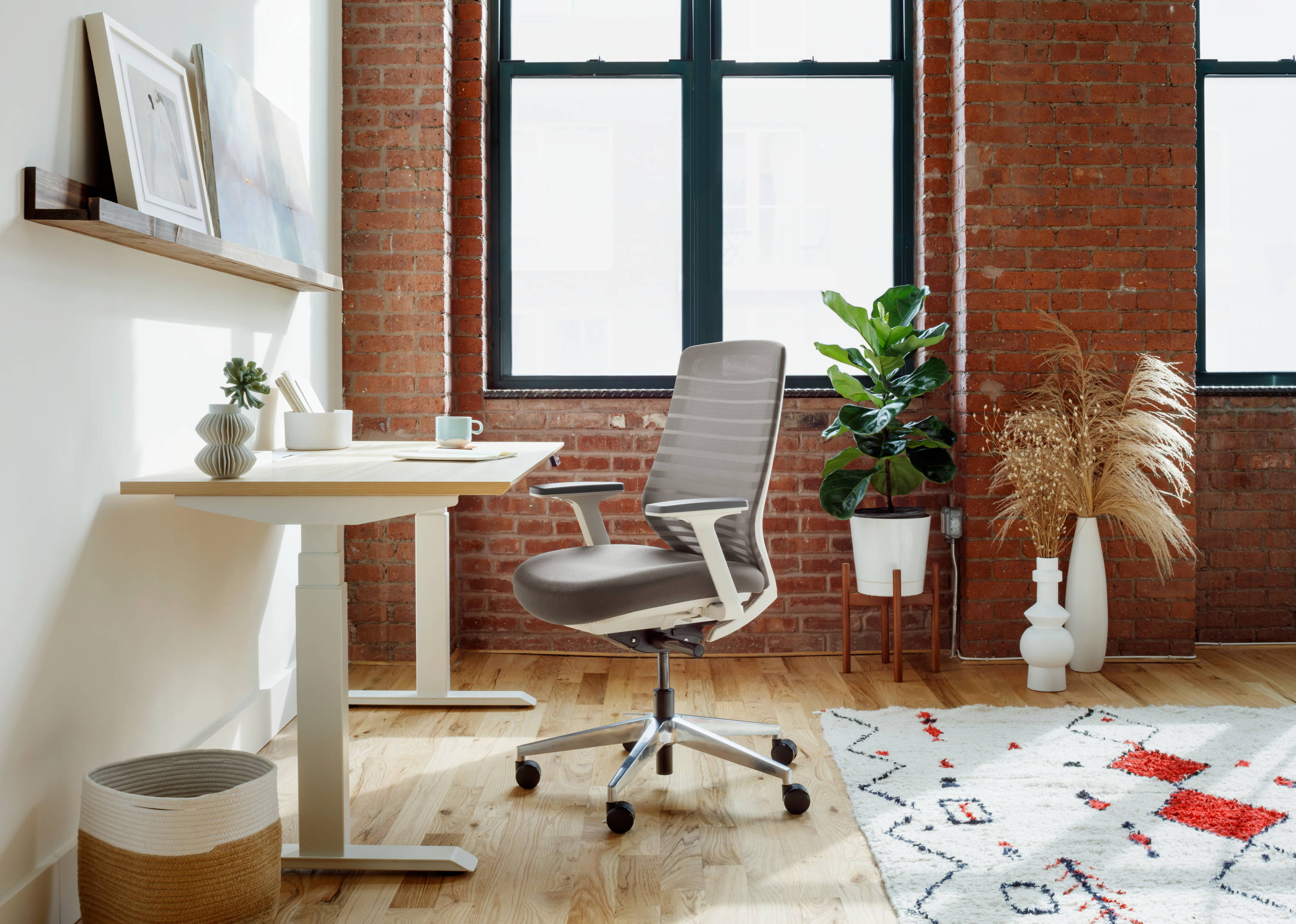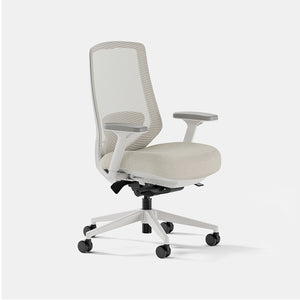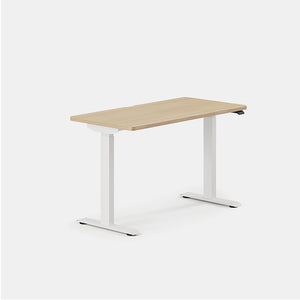Your home office should be an oasis of productivity and comfort. No matter the space, shared area, or restrictions, these three tips will help you set up a home office that helps you work even smarter.
1. Choosing Your Space
2. Layout! Layout! Layout!
3. It's All in the Little Details
Choosing Your Space
- Concentration,
- Memory,
- Learning,
- Mental stamina,
- Creativity, and
- Stress levels
Layout! Layout! Layout!
- Raise your seat height with feet firmly planted, until you find your thighs perfectly perpendicular to your calves. Keep your thighs parallel to the ground too! Your knee bend should be comfortably supported by the chair without your feet leaving the ground.
- Adjust the depth of your chair so that you can sit along the back, without messing up your leg alignment. Keep your posture stick-straight! Allowing for the natural curve of your lower spine, your lower back should be in line with your upper back. It might feel fine to slouch in a comfy arm chair or lean your lower back further in at the moment, but it’ll materialize in back pain later on.
- If you have armrests, they shouldn’t hold the weight of your upper body. Instead, they should serve as a place for your arms to naturally rest while your shoulders stay calm and dropped. Your upper arm should be perpendicular to your lower arm, and your lower arm should be parallel to the ground or desk when typing or writing.
It’s All in the Little Details
On new furniture, exclusive sales and more.





